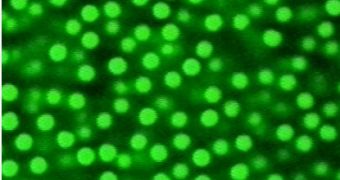Glass, even the one used in windows, has always fascinated scientists and not only due to its transparency. Like other solids, such as acrylic and polycarbonate, glass has a weird structure, which is not crystalline but disordered at the atomic scale.
Essentially, glass is a liquid frozen in time. This freezing, however, does not hold the molecules inside in a completely motionless state. In fact, the molecules continually undergo small motions that lead to a time dependence of properties.
Whether glasses are just very viscous liquids, or whether they are liquids that go through some kind of phase transition as they cool and solidify, is a question that has puzzled scientists for a long time. Now, a researcher provided them with a new look into the glass formation processes.
Eric Weeks of Emory University in Atlanta and his colleagues used tiny beads suspended in a liquid as a stand-in for the atoms or molecules in a real glass. Thus, they have been able to study a particle suspension that was enclosed between slightly angled rigid plates that formed a thin, wedge-shaped container.
After visualizing the three-dimensional motion of the particles in the space between the plates - varied from nearly zero to about 100 microns - they observed a clear pattern: the particles moved more slowly where the plates were closer together, even though many particles easily fit between them.
"In other words, confinement induces glassy behavior," says Weeks. He also found that this motion of the enclosed particles was suppressed at a larger spacing as their concentration was increased. However, the scientists could not go far enough to see the complete rigidity of a glass.
Still, this remains an important discovery that shows how, as particle density increases, the mixture generates larger and larger clusters of particles, as the scientists explain in a report in the 13 July Physical Review Letters
The findings could have important applications in particle physics, as well as in the glass production industry.

 14 DAY TRIAL //
14 DAY TRIAL //